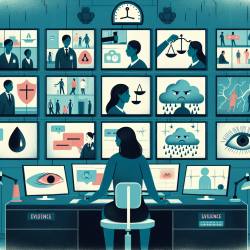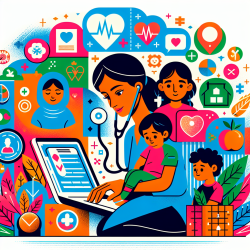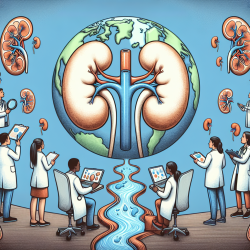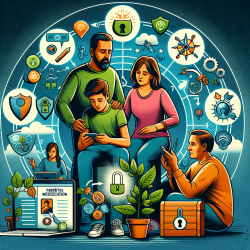The Shocking Truth About Video Evidence: Are You Prepared?
In the digital age, the prevalence of high-quality video and audio recordings has transformed the landscape of criminal justice. While these recordings serve as crucial evidence in the prosecution of violent crimes, they also pose significant challenges for the professionals who must analyze them. A recent study titled "Workplace Trauma in a Digital Age: The Impact of Video Evidence of Violent Crime on Criminal Justice Professionals" sheds light on the profound effects of this exposure and offers insights into managing its impact.
Understanding the Impact
The study, conducted through qualitative interviews with 16 Canadian criminal justice professionals, including police officers, lawyers, judges, and mental health professionals, highlights the emotional toll of repeated exposure to violent video evidence. Participants reported feeling unprepared for the graphic nature of the content, which often leads to secondary trauma, a condition akin to PTSD.
Key findings include:
- Ubiquity of Video Evidence: Participants noted the overwhelming volume of video evidence, which has become a staple in many cases, particularly those involving violent crimes.
- Proximity to Violence: High-quality video and audio recordings bring professionals closer to the crime, making it difficult to maintain emotional distance.
- Lack of Preparedness: Many professionals feel blindsided by the content, as traditional training does not adequately prepare them for the emotional impact of viewing violent footage.
- Repeated Exposures: The need to repeatedly view and analyze video evidence exacerbates the emotional toll, leading to symptoms such as insomnia, flashbacks, and anxiety.
- Insufficient Self-Protection: Customary coping mechanisms, such as compartmentalization, are often inadequate in the face of this new form of evidence.
Recommendations for Practitioners
Given the study's findings, it is crucial for criminal justice professionals to adopt strategies to mitigate the impact of secondary trauma. Here are some recommendations:
- Training and Preparedness: Institutions should provide training that includes trauma theory and research, normalizing reactions to traumatic content, and offering guidelines for safe viewing practices.
- Support Systems: Establishing a support network within the workplace can help professionals process their experiences and reduce feelings of isolation.
- Limiting Exposure: Setting limits on the amount of time spent viewing graphic content and ensuring regular breaks can help manage stress levels.
- Professional Help: Encouraging help-seeking behavior and providing access to psychological support can mitigate long-term effects.
Conclusion
As video evidence becomes increasingly integral to the criminal justice process, it is imperative to address the emotional and psychological challenges it presents. By implementing the recommendations outlined above, professionals can better protect themselves from the harmful effects of secondary trauma.
To read the original research paper, please follow this link: Workplace Trauma in a Digital Age: The Impact of Video Evidence of Violent Crime on Criminal Justice Professionals.










